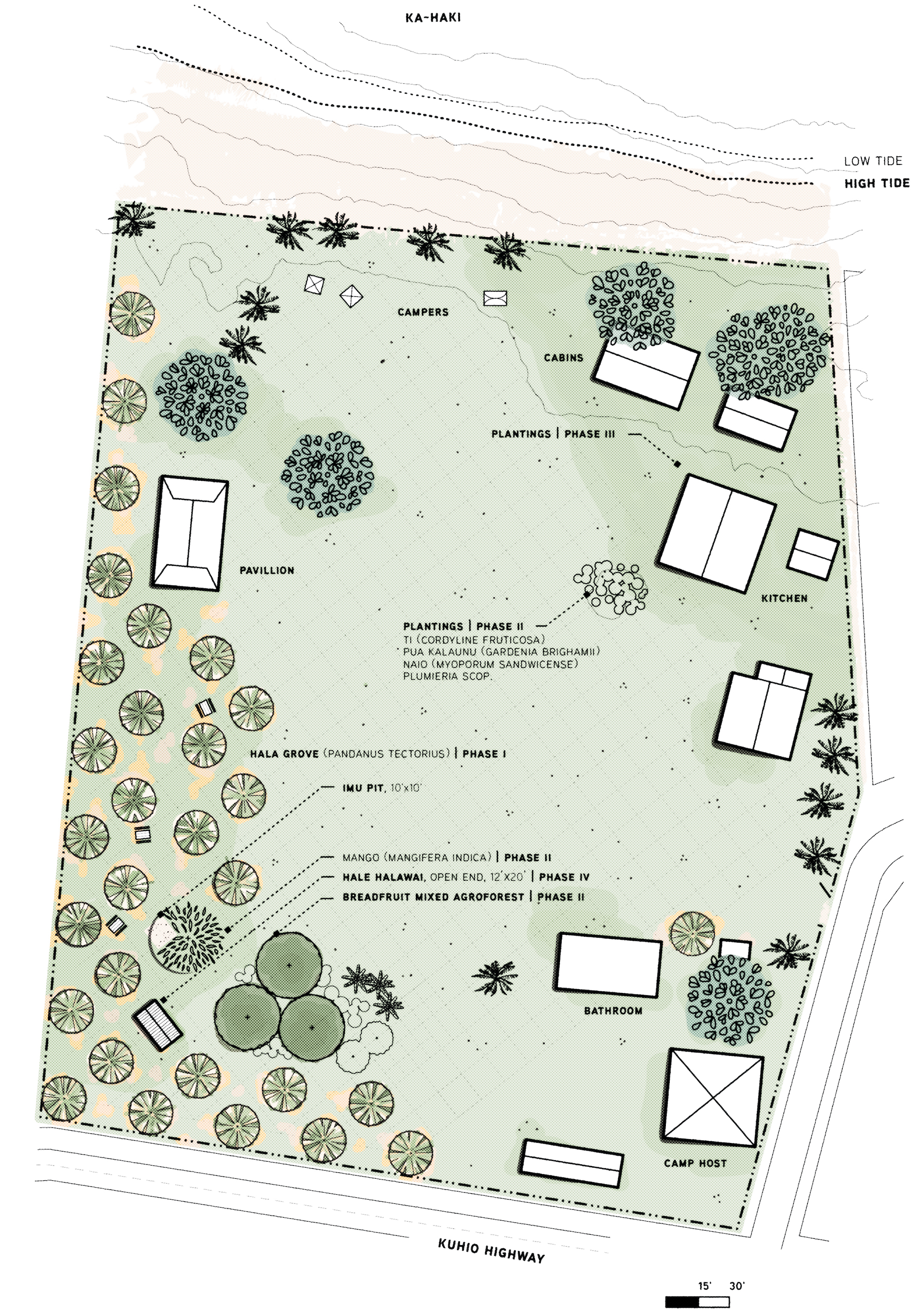YMCA Camp Nau’e, Nā Hala O Naue
Work:
Cultural landscape recognition, honoring the history of place.
Location: YMCA Camp Nau’e
Size: 3.95 ac
Status: Phase one completed, 2023-ongoing.
Project Description:
The famous Hala (pandanus) groves of Nau’e were once celebrated in old Hawaiian song and story. Meaning to move or tremble, the lands name attests to the winds and sweeping sea that greeted travelers and fisherman alike at this exposed place on the northern end of Ha’ena’s coastal expanse.
Lost to the 1946 and 1957 tsunami’s, that tragically erased these emblematic groves from the landscape. This project seeks to restore the grove as a symbol of heritage and a repository for aloha, underscoring the importance of cultural and ancestral connections to plants and place. Spanning four phases, our vision encompasses the grove's reestablishment, the seamless integration of pre-existing YMCA facilities, the inception of a community-centric agroforest centered on breadfruit, and the crafting of a traditional Hawaiian hale (house). This hale will serve as a reserved space for lauhala (Hala leaf) weavers, ensuring that the artistry and traditions of old are passed down and preserved for generations to come.
Work:
Cultural landscape recognition, honoring the history of place.
Location: YMCA Camp Nau’e
Size: 3.95 ac
Status: Phase one completed, 2023-ongoing.
Project Description:
The famous Hala (pandanus) groves of Nau’e were once celebrated in old Hawaiian song and story. Meaning to move or tremble, the lands name attests to the winds and sweeping sea that greeted travelers and fisherman alike at this exposed place on the northern end of Ha’ena’s coastal expanse.
Lost to the 1946 and 1957 tsunami’s, that tragically erased these emblematic groves from the landscape. This project seeks to restore the grove as a symbol of heritage and a repository for aloha, underscoring the importance of cultural and ancestral connections to plants and place. Spanning four phases, our vision encompasses the grove's reestablishment, the seamless integration of pre-existing YMCA facilities, the inception of a community-centric agroforest centered on breadfruit, and the crafting of a traditional Hawaiian hale (house). This hale will serve as a reserved space for lauhala (Hala leaf) weavers, ensuring that the artistry and traditions of old are passed down and preserved for generations to come.




The existing pavilion at Nau’e has long served as a significant gathering place for community purposes and civic participation. Over time, the re-established Hala grove is to envelop the pavilion, offering privacy, intimacy, and a deepened sense of place.
Directly connected to the pavillion through the triangulated symmetry of Hala, the final phase of the plan proposes the construction of a small traditional hale. This space will be open to lauhala weavers and other cultural practitioners.
Directly connected to the pavillion through the triangulated symmetry of Hala, the final phase of the plan proposes the construction of a small traditional hale. This space will be open to lauhala weavers and other cultural practitioners.





Featured In:

